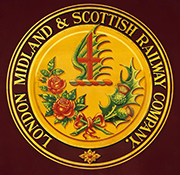

This site uses non-intrusive cookies to enable us to provide a better user experience for our visitors. No personal information is collected or stored from these cookies. The Society's policy is fully explained here. By continuing to use this site you are agreeing to the use of cookies.
The organisation of a vast commercial undertaking is a live thing, constantly changing, like the human body, but also strongly resistant to change. It is capable of considerable adaptation for particular needs, but it must be based on sound principles, tested by experience, and it is important to have a plan towards which the organisation is steadily directed; as opportunity offers, weaknesses can be strengthened. Each of the separate railway systems which formed the L.M.S. had its own traditions, practices and methods which, while presenting little difference to the public, were often radically at variance. Such visible things as locomotive and vehicle design and signalling were obvious matters that required attention, but were hardly as important as the need to create a new and unified system of administration. Many of the smaller railways were readily absorbed in the chief constituent companies and, for operating purposes, four divisions were formed which, broadly, covered the areas of the
The board and general administration was set up in London, with delegation of certain powers in Scotland to a sub-committee of the board, with additional local members and a chief officer for Scotland.
In a few years, the executive work of the company was transferred to a president and three vice-presidents, each of the latter acting as a general manager for specific departments, the heads of which reported to him, and, with his approval, to sub-committees of the board charged with such matters as finance, traffic, mechanical engineering, civil engineering, law and staff. shipping, &c. By this means, the unique magnitude and widespread range of the company's obligations and interests from Bournemouth to Thurso, from Southend to Donegal, were focussed and collective views formed and policy decided through their local representatives, district managers, chief officers of departments, the vice-presidents, the president, the sub-committees of the board, the board and, finally, the general meetings of the proprietors.
It was a novel step in British railway history and a successful one. But it is only in recent years that the ultimate effect has been seen; there is no short cut to rationalisation on an amalgamation on this scale. This is a point to be borne in mind in considering any projects of a similar nature.
Site contents Copyright © LMS Society, 2024

May 9th, 2024
Site contents Copyright © LMS Society, 2024